Durant l’Antiquité gréco-romaine, l’interprétation des rêves, guère plus fantaisiste ni moins mercantile que celle des psychanalystes, était une spécialité des prêtres et de certains médicastres. Aelius Aristide, au IIe siècle de notre ère, semble avoir collationné tous ses rêves en des dizaines de milliers de lignes sur papyrus (Schiavone, 2003), comme son contemporain Artémidore, auteur de l’Onironcriticon (l’interprétation des rêves).
De même, dans de nombreuses peuplades primitives, une plante ou un organe animal, pouvant passer pour un symbole phallique, paraissent un gage de fertilité ou un espoir de guérir de l’impuissance : la corne de rhinocéros est depuis longtemps un composant essentiel de la pharmacopée chinoise, dans le traitement (parfaitement illusoire) de l’anérection. De ce fait, le très corruptible gouvernement d’Afrique du Sud a ré-autorisé la chasse au rhinocéros en 2014, officiellement, pour « réduire le trafic » des cornes ornant son museau. La sexologie de type fumisterie n’est pas une invention de Freud et associés.
Au XVIe siècle, le génie médical suisse Theophrast Bombast v. Hohenheim, plus connu sous le pseudonyme universitaire de Paracelse, rapportait les maladies mentales à une influence magnétique pernicieuse sur le cerveau (de nos jours, l’on parlerait de perturbations de l’électricité cérébrale) et avait entrevu le rôle des frustrations et conflits sexuels dans la genèse de certaines de ces maladies mentales.
Diderot, époux et amant très volage, aborda le problème de la sexualité dans une lettre de juillet 1767 adressée au sculpteur Étienne Falconet : « Il y a un peu de testicule au fond de nos sentiments les plus sublimes et de notre tendresse la plus épurée » (Guyot, 1963). Dans ses livres non publiés de son vivant, il se fait le propagandiste de la liberté sexuelle, prônant la masturbation comme remède à la névrose hystérique et considérant la chasteté comme « un crime contre nature » (in Suite de l’entretien de d’Alembert, de 1769).
Peu après, l’excellent médecin Franz-Anton Mesmer traite les névrosées par le « magnétisme humain » (ayant mal interprété les petites décharges électriques liées à l’hyperexcitabilité neuromusculaire), par une ébauche d’électrothérapie et surtout par des conseils sexologiques aux maris inexperts. Mesmer a le tort de se comporter en histrion et d’aimer l’argent… travers assez répandus dans sa profession.
En 1846, le neurologue Moritz Romberg (de Berlin) et, en 1868, Moritz Benedikt (un Goy de Vienne, à ne pas confondre avec son homonyme , directeur de journal) envisagent un ou des traumatismes mentaux infantiles comme causes de l’hystérie (Hirschmüller, 1991). Dans les années 1880 sq., de façon séparée, Benedikt et Pierre Janet (du Havre) traitent les névrosé(e)s en leur faisant évoquer des souvenirs d’enfance et d’adolescence (Corraze, 1976 ; Hirschmüller, 1991), soit bien avant les premiers essais de Josef Breuer, puis de Freud, à Vienne.
En 1869 avec Philosophie de l’inconscient et en 1879 avec Phénoménologie de la conscience morale, Eduard von Hartmann décrit tout ce que Freud reprendra à propos de l’inconscient individuel que l’on ferait beaucoup mieux de nommer subconscient (cf. infra). Hartmann est aussi un précurseur de Pierre Teilhard de Chardin : l’évolution darwinienne ne peut, selon lui, qu’être orientée vers la « rédemption universelle ».
Le Dr. Arthur Schnitzler, une Diva de Vienne qui haïssait Freud autre Diva médicale, avait, dans sa pièce de 1899 consacrée à Paracelse, insisté lourdement sur l’interprétation des rêves et le rôle des amours inassouvies dans la genèse de quelques névroses (Flem, 1986). Au début du XXe siècle, Otto Weininger, qui fréquente les deux Divas précitées, qui est lui-même un schizophrène en révolte contre ses parents, sa judéité, ses penchants homosexuels, devient l’un des concepteurs de la théorie du genre librement choisi par l’individu dont les émois sexuels contredisent sa conformation.
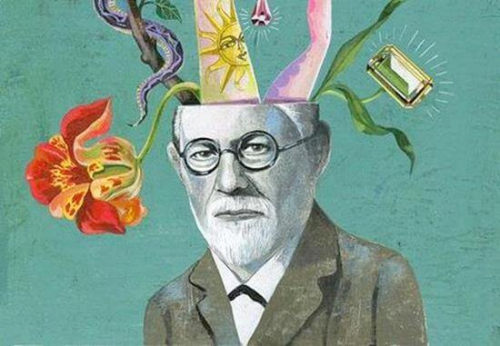
Arrivent deux individus très perturbés, Wilhelm Fliess et Sigismond-‘’Sigmund’’ Freud, inventeurs de la psychanalyse qui, selon la définition assez juste de Karl Kraus, un Juif viennois qui haïssait Freud, est « une maladie mentale qui se prend pour une thérapie » (Field, 1967). Freud et Fliess sont deux Juifs racistes, convaincus de l’extraordinaire supériorité des Juifs sur les Goyim (Masson, 1984 ; Cohen, 2012). Leurs motivations sont beaucoup moins innocentes et « scientifiques » qu’on l’a trop souvent écrit.
La très curieuse tribu des Freud
Depuis son enfance, le paranoïaque Freud « aspirait à apporter un nouveau message à l’humanité… Il a réalisé son vieux rêve, d’être le nouveau Moïse montrant une nouvelle Terre promise : la conquête du Ça par le Moi » (Fromm, 1959). À dire vrai, le grand neurophysiologiste de Vienne Thomas Meynert enseignait depuis de nombreuses années l’importance du « moi intérieur » ou subconscient, mais comment Freud pourrait-il citer celui dont il fut l’assistant et qui l’avait chassé ignominieusement en raison de sa toxicomanie à la cocaïne, dont il se faisait généreusement le propagandiste auprès des malades du service de Meynert ? Freud use (et abuse) de la cocaïne de 1884 à 1904 (Cohen, 2012), soit durant la période de naissance de sa conception de la psychiatrie, une spécialité qu’il avait fort peu étudiée, quoi qu’on en ait dit (Bénesteau, 2002, l’a démontré).
On peut négliger le verbiage final d’Erich Fromm, marxiste et psychanalyste, et ne retenir que la mégalomanie de Sigismond Freud, fils de Jakob, pédophile incestueux, et développant lui-même des sentiments incestueux pour sa mère (et l’une de ses filles). Ainsi naissent, par l’exploitation habile d’écrits de prédécesseurs et de sa triste expérience familiale, le complexe d’Œdipe et le meurtre rituel du père par le fils. Toute sa vie, Freud lutta contre sa bisexualité, tandis que sa fille Anna, devenue en 1927 membre du Comité de l’Association Internationale de Psychanalyse, se vautra dans le lesbianisme.
Maman Freud, née Amalia Nathanson, plus jeune de 19 ans que son pédophile de mari, Jakob, qui eut trois épouses, a entretenu une liaison sexuelle torride avec Philipp Freud, fils du premier mariage de Jakob (Krüll, 1983). Sigismond épouse en 1886 la fille d’un commerçant qu’il croit riche et qui s’avère n’être qu’un escroc (Cohen, 2012). Comble de malheur, ce paranoïaque bisexuel, à l’homosexualité refoulée, développe des sentiments incestueux envers sa fille Mathilde, lorsqu’elle est âgée de 9 ans, apparemment sans être passé à l’acte (s’il faut en croire une lettre adressée à Fliess, en 1896, in Cohen, 2012). On comprend que Freud, accablé par tant d’ignominies et de perversions familiales sans oublier ses propres tares, ait présenté le sentiment de culpabilité – singulièrement pour ce qui est de la sexualité – comme l’un des fondements de la vie morale (Freud, 1905, 1915, 1920).
Que le jeune Freud, élevé dans un milieu sexuellement dépravé, ait vécu un martyre intérieur, n’importe qui peut le comprendre et compatir aux malheurs de cet homme torturé. Hélas, il a fallu qu’il fasse don à l’ensemble de l’humanité de ses turpitudes personnelles et familiales et qu’il en généralise l’application, après avoir reçu les confidences de son ami de Berlin Wilhelm Fliess, un otorhinolaryngologiste bisexuel, également paranoïaque, massacrant littéralement certains de ses patients et ne tirant aucune leçon de leur mort, qui nourrissait une passion incestueuse pour son propre fils Robert, alors âgé de 5 ans (Masson, 1984 ; Correspondance non-expurgée Freud-Fliess, 2006, notamment les lettres de Freud, en date des 2 et 11 février 1897). La correspondance de Freud témoigne de son égocentrisme, de son avidité de gloire et d’argent ; elle est farcie de termes scatologiques et orduriers (Freud-Fliess, 2006 ; Cohen, 2012).
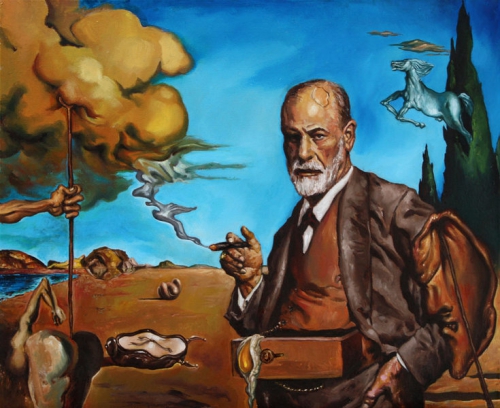
Fliess et Freud ont rompu lorsqu’en 1906, le premier a reproché au second de plagier les travaux d’un authentique psychiatre, Albert Moll, les déformant de façon grotesque (Bénesteau, 2002). Freud a violé l’anonymat de ses patients, dans sa correspondance avec des confrères, mais aussi en discutant avec des amis non médecins, ce qui est un délit grave. Enfin, il a très souvent menti sur ses résultats thérapeutiques (Bénesteau, 2002).
Freud et ses disciples, haineusement anticatholiques (ce que leur reprochait leur ennemi juif Karl Kraus, converti au catholicisme par conviction intime, comme c’était le cas des grands anxieux Alfred Adler et Gustav Mahler), taxaient « d’antisémitisme » tous ceux qui contestaient le bien fondé de leurs thèses. Le très talentueux Carl-Gustav Jung sera accusé de cette façon pour avoir, bien avant la Grande Guerre, affirmé que la psychanalyse n’était d’aucun secours dans le traitement des psychoses ; il avait pleinement raison.
Pourtant, la carrière de Freud ne souffrit nullement de son anticatholicisme ni de son implication dans la secte maçonnique des B’naï B’rith (à compter de 1897, in Flem, 1986, qui, très curieusement, en fait une loge maçonnique « très libérale »). Docteur en médecine en 1881, il est agréé Privatdozent (maître de conférences agrégé) à la Faculté de médecine de Vienne en 1885, professeur extraordinaire (sans chaire) en 1902 et titulaire de chaire en 1919 (Ellenberger, 1970), mais la rengaine de « Freud, victime de l’antisémitisme viennois » fait toujours la gloire et la fortune de romanciers et de scénaristes (Mahler est également bien placé dans ce registre totalement erroné).
En retour, Freud, le pistonné de la faculté de médecine de Vienne, voue à sa ville « une haine personnelle » (in lettre à Fliess, du 11 mars 1900). Freud ne souffre nullement d’un soi-disant antijudaïsme institutionnel (pas plus que n’en souffre Mahler, qui pourtant le dénonce lui aussi) : c’est un perpétuel insatisfait, une Diva assoiffée de gloriole et d’argent, qui explique ses échecs par la malignité publique. On sait que, depuis deux millénaires et demi, divers Juifs ont pris l’habitude de dénoncer le racisme des Goyim, sans se soucier le moins du monde de leur propre racisme matrimonial.
Psychanalyste ou pas, Freud poursuit aveuglément la tradition paranoïaque de certains Juifs, du style : « Tout le monde nous en veut, parce que nous sommes les plus beaux, les plus intelligents, les plus…, les moins… ».
Les curieux débuts de la religion psychanalytique
Est-il véritablement nécessaire de faire intervenir les passages érotiques, la symbolique sexuelle ou les associations d’idées plus ou moins délirantes de la Kabbale (Eysenck, 1965 ; Bailey, 1972), pour expliquer les ahurissantes explications que Freud et consorts ont tirées des confidences de leurs malades, immédiatement répercutées dans des livres et les exposés publics des géniaux découvreurs des « secrets de l’inconscient » ?
On peut d’ailleurs faire une objection sémantique à la prétention de ces génies : s’il existe un « inconscient » dans l’esprit humain, il est aussi impénétrable à l’intelligence humaine que les célébrissimes voies de la providence divine. L’on peut négliger les doctes âneries de Jacques Lacan sur « l’inconscient structuré comme le langage ». Seul le subconscient est accessible, soit les souvenirs enfouis au plus profond de la conscience, sous d’épaisses couches de mensonges et grâce aux oublis volontaires.
La religion psychanalytique est née de la réunion, à Vienne, d’un nombre ahurissant de dérangés mentaux, presque tous juifs ; le seul Goy des origines du nouveau culte viennois qui lui soit demeuré fidèle (Jung a très vite déserté la chapelle freudienne), le Britannique Ernest Jones, était lui-même pédophile (Bénesteau, 2002). Comme l’a dit Freud au médecin britannique Stanley Blanton, à propos des étudiants en médecine qui orientent leur carrière vers la psychiatrie : « C’est parce qu’ils ne se sentent pas normaux et qu’ils veulent se convaincre qu’ils le sont » (Blanton, 1973)… on peut même penser qu’ils espèrent se guérir eux-mêmes.
On est ébahi du nombre de pionniers de la psychanalyse morts suicidés ou déments (Zwang, 1985 ; Bénesteau, 2002). Parmi les suicidés, l’on trouve Wilhelm Stekel (qui, en 1910, s’était fait connaître par une publication où il faisait du suicide le désir d’expier une faute sexuelle, soit une reductio a sexis, parfois vérifiée, mais souvent absente des motivations du suicidaire), Victor Tausk, Otto Gros, et quatre autres fidèles des premières années : messieurs Federn, Kahane, Schrötter et Silberer. Sont réputés morts déments Otto Rank (fils d’ivrogne et longtemps l’élève préféré de Freud) et Sandor Ferenczi, tous deux obsédés sexuels et exceptionnellement laids (Ferenczi a dirigé la psychanalyse à Budapest durant les tueries communistes de 1919, in Roheim, 1967, qui fut lui-même un autre Juif, riche et marxiste, de la bande de Bela Kohn dit Kun, de triste mémoire). George Groddeck, un Goy élevé en fille jusqu’à l’âge de 6 ans et obsédé par le mythe platonicien de l’androgyne (cf. Groddeck, 1920), est également mort dément.
À cette liste de noms, dont certains furent célèbres, on peut ajouter ceux de Mélanie Klein (une déséquilibrée, selon Bruno Bettelheim, 1991), qui fut à l’origine de la fable des « enfants traumatisés par le pot de chambre », et de la schizophrène Sabina Spielrein. Alfred Adler, l’homme du complexe d’infériorité, et Wilhelm Reich, le chantre de l’amour libre et le théoricien de l’orgone auquel nul n’a jamais rien compris (peut-être parce que c’était un absurdité intégrale), étaient deux nabots, laids et marxistes. Quant à l’honorable Max Eitington, il fut à la fois un Juif fort riche et un agent stalinien du NKVD (l’ancêtre du KGB).
De 1902 à 1938, 25 des 307 membres de l’Association Internationale de Psychanalyse se sont suicidés. Prenant conscience de cette surmortalité endogène, Freud a dit, peu de temps avant de quitter Vienne : « Le jour n’est pas loin où l’on considérera la psychanalyse comme une cause légitime de décès » (in Bénesteau, 2002). On peut apprécier l’humour noir dans la fiction romanesque, mais une telle phrase sur un tel sujet est indigne d’un médecin.

Nombre de ces malheureux avaient beaucoup souffert durant leur enfance et l’on ferait bien de s’intéresser au fardeau génétique de l’endogamie rituelle forcenée et aux ignominies sexuelles parentales. Rank, fils d’ivrogne a focalisé ses études sur le traumatisme de la naissance et sur la domination du psychanalysé par son analyste (Johnston, 1985). Rank et Ferenczi, obsédés sexuels, semblent avoir abusé de certaines de leurs patientes (Bénesteau, 2002).
Freud lui-même fut un monument d’arrogance et de psychorigidité, rectifiant motu proprio les souvenirs de ses malades quand ceux-ci ne cadraient pas avec son interprétation, fondée sur des aprioris (Jones, 1969). Freud mentait effrontément dans les publications des cas cliniques qu’il avait observés et plus encore sur les résultats thérapeutiques qu’il était censé avoir obtenus (Bénesteau, 2002). Comme bien des obsessionnels, Freud était avant toute autre chose un grand anxieux, refusant, par esprit de système, de laisser quelque rôle que ce soit au hasard ou, si l’on préfère, faisant de la vie et de ses aléas une nécessité voulue par une divinité impersonnelle, comme Albert Einstein qui refusait l’indétermination et l’incertitude d’Heisenberg, parce que « Dieu ne joue pas aux dés ».
Le Juif ne sommeillait jamais en Freud, qui se souvenait de la faute originelle, selon le texte de la Genèse : Ève avait perverti Adam, pour s’être laissée séduire par Satan. L’œuvre de Freud, soit la prétention d’avoir exploré la « psychologie des profondeurs de l’esprit humain », n’était fondée que sur sa propre introspection. De ses tares, de ses peurs, de ses désirs insanes réprimés et inassouvis, de sa culture biblique et talmudique, il a inféré une conception fort restrictive de l’être humain : celle du Tout-sexuel. Ses thèses furent fort bien reçues par les tenants de l’école de Francfort, qui les exportèrent aux USA durant les années 1938-60, d’où elles revinrent en Europe occidentale lors de l’explosion politico-sexuelle des années 1965-1975.
La sous-littérature d’inspiration psychanalytique consacrée au Führer du IIIe Reich affublera cet homme chaste et austère des tares et des anomalies de comportement du grand Freud, qui expulsait ses accès de colère en cassant des objets, qui consultait des voyantes et autres diseuses de bonne aventure, qui luttait furieusement contre ses tendances homosexuelles, qui multipliait les aventures extra-conjugales, qui pratiquait un véritable fétichisme des nombres, qui haïssait Vienne et les Viennois (Bénesteau, 2002) : toutes tares et déviances dont on pare un Hitler de fantaisie (cf. Plouvier, 2012, IIe partie).
Il serait absurde de nier le caractère sexuel de nombreux rapports conflictuels entre humains, notamment ceux régissant l’hégémonie, pour la seule raison que Freud et ses élèves en ont abondamment disserté (Gérard Zwang, 1985, va trop loin dans le déni). De même, si l’on ne peut que sourire des allégations freudiennes selon lesquelles tout être humain est bisexuel (une fois de plus, le maître faisait de son cas une généralité), on ne peut qu’accepter les statistiques non-biaisées qui permettent d’estimer les homosexuels exclusifs aux alentours de 3% des humains avec un pourcentage très voisin de bisexuels (cf. les études rapportées in Randa, 2013).
Tous les pseudo-travaux des psychanalystes, notamment ceux de Mélanie Klein, sur le pouce de l’enfant utilisé comme substitut du mamelon maternel sont devenus obsolètes lorsque les études échographiques de la grossesse ont démontré que tous les fœtus sucent leur pouce in utero, bien avant de téter le sein maternel.
On ne peut nier que la « scolastique freudienne » (Debray-Ritzen, 1991) repose sur des ratiocinations grotesques à partir de prémices infondées et de pseudo-« vérités révélées » par Freud, tantôt délirant, tantôt faussaire (Bénesteau, 2002) et consorts. De même, il est indubitable que « la méthodologie psychanalytique relève du délire d’interprétation » (Zwang, 1985) et d’une pseudo-religion. Pour bien des esprits faibles, de 1900 à nos jours, le bagout des psychanalystes a remplacé les prêches du clergé, coûtant davantage d’argent à leurs ouailles.

Néanmoins, on ne peut éliminer tous les apports psychiatriques des années 1870-1930 sur les névroses et la part psychosomatique de nombreuses maladies, au prétexte que de trop nombreux psychanalystes furent des charlatans débauchés et fort peu honnêtes. Le seul grand psychiatre de l’ère pré-chimiothérapique fut Carl-Gustav Jung, qui souffrait lui-même de psychose maniaco-dépressive comme sa mère. Il eut l’immense mérite de différentier les personnalités introverties (très influencées par les impressions subjectives, dont l’esprit analytique favorise la réflexion personnelle) et les extraverties (objectives, dogmatiques et positives, d’esprit synthétique, très sensibles aux faits), avec toute la gamme des personnalités intermédiaires (Jung, 1977).
La psychiatrie moderne doit divorcer de la supercherie psychanalytique qui restera un inépuisable filon de science-fiction.
Bibliographie
P. Bailey : Sigmund, le tourmenté, La Table Ronde, 1972
J. Bénesteau : Mensonges freudiens. Histoire d’une désinformation séculaire, Mardaga,
B. Bettelheim : Le poids d’une vie, essais-souvenirs, Laffont, 1991
S. Blanton : Journal de mon analyse avec Freud, P.U.F., 1973
D. Cohen : Freud sous coke, Balland, 2012
J. Corraze : De l’hystérie aux pathomimies, Dunod, 1976
P. Debray-Ritzen : La psychanalyse, cette imposture, Albin Michel, 1991
H. F. Ellenberger : The discovery of the unconscious. The history and evolution of dynamic psychiatry, Basic Books, New York, 1970 (cet énorme pavé permet de réfuter les allégations sur l’antijudaïsme qui aurait « régné en maître » à la faculté de médecine de Vienne ou dans la haute administration autrichienne avant la Grande Guerre)
H. J. Eysenck : Fact and fiction in psychology, Penguin Books, Londres, 1965
F. Field : The last days of mankind. Karl Kraus & his Vienna, McMillan, Londres, 1967
L. Flem : La vie quotidienne de Freud et de ses patients, Hachette, 1986
S. Freud : Trois essais sur la théorie de la sexualité, Gallimard, 1966 (1ère édition allemande de 1905, texte très remanié en 1915)
S. Freud : Essais de psychanalyse, Payot, 1970 (1ère édition, allemande en 1920)
S. Freud : Lettres à Wilhelm Fliess. 1887-1904, P.U.F., 2006 (1ère édition non expurgée)
E. Fromm : La mission de Sigmund Freud, Éditions Complexe, Bruxelles, 1975 (1ère édition nord-américaine de 1959)
G. Groddeck : La maladie, l’art et le symbole, Gallimard, 1969 (compilation de textes écrits de 1909 à 1933)
C. Guyot : Diderot par lui-même, Seuil, 1963 (1ère édition de 1953)
A. Hirschmüller : Josef Breuer, P.U.F., 1991 (1ère édition allemande de 1978)
E. Jones : La vie et l’œuvre de Sigmund Freud, P.U.F., 1969
W. M. Johnston : L’esprit viennois. 1848-1938, P.U.F., 1985 (ouvrage d’exception)
C. G. Jung : Types psychologiques, Georg, Genève, 1977 (1ère édition de 1950)
M. Krüll : Sigmund, fils de Jacob : un lien non dénoué, Gallimard, 1983
J. M. Masson : Le réel escamoté. Le renoncement de Freud à la théorie de la séduction, Aubier, 1984
B. Plouvier : Faux et usage de faux en histoire, pour la IIe partie : Les faussaires de l’hitléromanie, Dualpha, 2012
P. Randa : Mafia rose. Des fantasmes dénoncés à l’exaspération actuelle, Déterna, 2013
G. Roheim : Psychanalyse et anthropologie, Gallimard, 1967 (1ère édition US en 1950 ; avant-propos hagiographique de Roger Dadoun)
A. Schiavone : L’histoire brisée. La Rome antique et l’Occident moderne, Belin, 2003 (édition originale italienne de 1996)
G. Zwang : La statue de Freud, Laffont, 1985


 Un autre élément est un fonctionnement familial clanique, très répandu chez les gens du voyage, les familles kosovares et maghrébines. Un clan est comme un corps dont chaque individu est un membre. Alors que le but d’une famille devrait être que les parents cherchent à ce que leur enfant se construise une pensée personnelle et puisse s’éloigner d’eux pour se construire un projet personnel, dans une famille clanique le mode de pensée est indifférencié, le but n’est pas qu’un sujet pense par lui-même, son identité est d’abord d’appartenir au groupe. Le terme de ghettoïsation est donc inexact car on est enfermé dans un ghetto alors qu’ici au contraire, la contrainte est intérieure, autosécrétée, car c’est l’éloignement du groupe qui est angoissant, en pensée, ou physiquement hors du territoire. Les populations concernées n’ont pas été contraintes de se regrouper, ce sont elles qui choisissent de se concentrer sur la base d’une identité groupale. Et la représentation que les membres d’un clan ont de la relation n’est pas de personne à personne mais de groupe à groupe. Si l’un d’eux est en difficulté dans une relation, il rameute son groupe : « mes frères vont venir te tuer ». Ce mode clanique est un obstacle à l’intégration des individus, les codes du groupe peuvent primer sur les règles de la République.
Un autre élément est un fonctionnement familial clanique, très répandu chez les gens du voyage, les familles kosovares et maghrébines. Un clan est comme un corps dont chaque individu est un membre. Alors que le but d’une famille devrait être que les parents cherchent à ce que leur enfant se construise une pensée personnelle et puisse s’éloigner d’eux pour se construire un projet personnel, dans une famille clanique le mode de pensée est indifférencié, le but n’est pas qu’un sujet pense par lui-même, son identité est d’abord d’appartenir au groupe. Le terme de ghettoïsation est donc inexact car on est enfermé dans un ghetto alors qu’ici au contraire, la contrainte est intérieure, autosécrétée, car c’est l’éloignement du groupe qui est angoissant, en pensée, ou physiquement hors du territoire. Les populations concernées n’ont pas été contraintes de se regrouper, ce sont elles qui choisissent de se concentrer sur la base d’une identité groupale. Et la représentation que les membres d’un clan ont de la relation n’est pas de personne à personne mais de groupe à groupe. Si l’un d’eux est en difficulté dans une relation, il rameute son groupe : « mes frères vont venir te tuer ». Ce mode clanique est un obstacle à l’intégration des individus, les codes du groupe peuvent primer sur les règles de la République.





 del.icio.us
del.icio.us
 Digg
Digg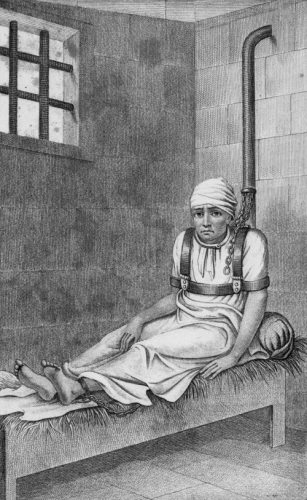
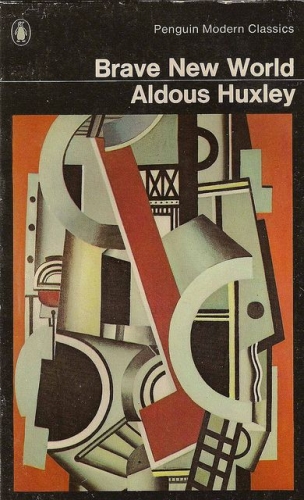 "Je crois que les oligarchies trouveront des moyens plus efficaces de gouverner et de satisfaire leur soif de pouvoir et seront semblables à celles décrites dans Brave New World (= Le meilleur des mondes)".
"Je crois que les oligarchies trouveront des moyens plus efficaces de gouverner et de satisfaire leur soif de pouvoir et seront semblables à celles décrites dans Brave New World (= Le meilleur des mondes)". Comme un monstre dans l'édition augmentée et mise à jour de mon livre intitulé Fake news (Arianna Editrice), les cas de censure, de boycott et d'attaques de plus en plus impitoyables contre l'information indépendante deviennent quotidiens.
Comme un monstre dans l'édition augmentée et mise à jour de mon livre intitulé Fake news (Arianna Editrice), les cas de censure, de boycott et d'attaques de plus en plus impitoyables contre l'information indépendante deviennent quotidiens.
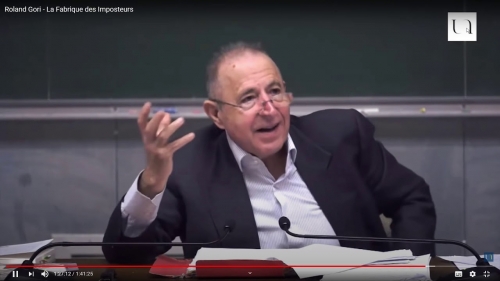

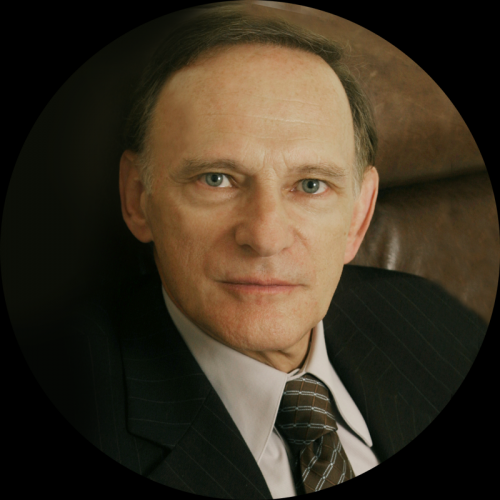
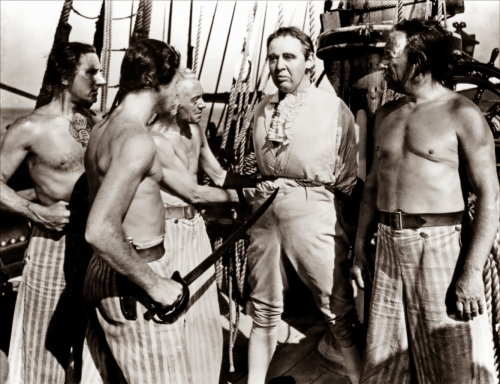




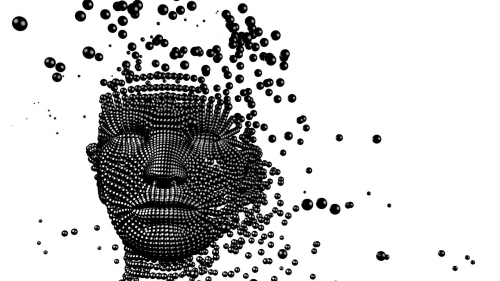


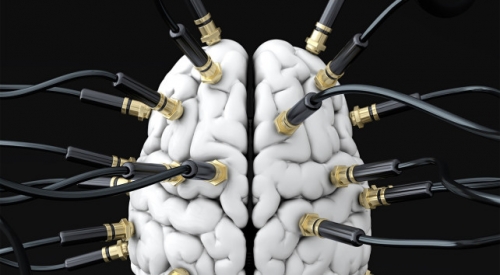


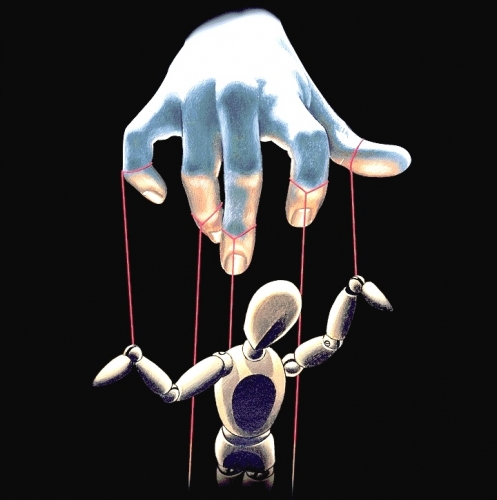

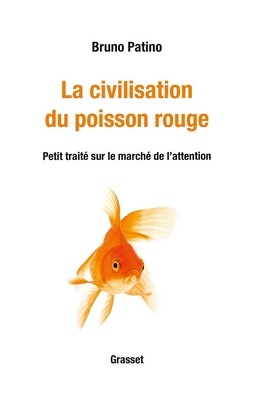 Une interrogation suscitée par les révélations de Bruno Patino, dans son ouvrage La civilisation du poisson rouge (Grasset), qui s’alarme de l’addiction aux écrans, notamment celui du smartphone, provoquée par les manœuvres des géants du numérique pour nous rendre accros. Nous avons vu que cette dépendance commençait très tôt, dès la petite enfance.
Une interrogation suscitée par les révélations de Bruno Patino, dans son ouvrage La civilisation du poisson rouge (Grasset), qui s’alarme de l’addiction aux écrans, notamment celui du smartphone, provoquée par les manœuvres des géants du numérique pour nous rendre accros. Nous avons vu que cette dépendance commençait très tôt, dès la petite enfance. La constitution d’un collectif autour d’une
La constitution d’un collectif autour d’une 
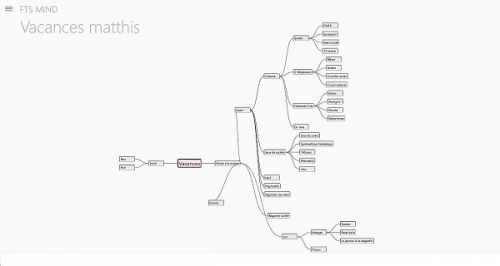


 Vanaf de openingspagina is duidelijk welke auteur voor Mel Bontje een grote inspirator is. Seks in een boek is één ding, maar waarom toch die fascinatie met zelfbevlekking? Een ander feit dat in het oog springt is dat de auteur doorklinkt in de gesprekken. Hij laat zich kennen in zowel zijn fascinatie met aftandsheid en verval, als in zijn erudiete woordkeuzes om sociale analyses uit te drukken. Dit rijmt niet overal met de personages: het zijn deftige zinnen waarmee de jonge geest absoluut en doordringend oordeelt over de werkelijkheid.
Vanaf de openingspagina is duidelijk welke auteur voor Mel Bontje een grote inspirator is. Seks in een boek is één ding, maar waarom toch die fascinatie met zelfbevlekking? Een ander feit dat in het oog springt is dat de auteur doorklinkt in de gesprekken. Hij laat zich kennen in zowel zijn fascinatie met aftandsheid en verval, als in zijn erudiete woordkeuzes om sociale analyses uit te drukken. Dit rijmt niet overal met de personages: het zijn deftige zinnen waarmee de jonge geest absoluut en doordringend oordeelt over de werkelijkheid.
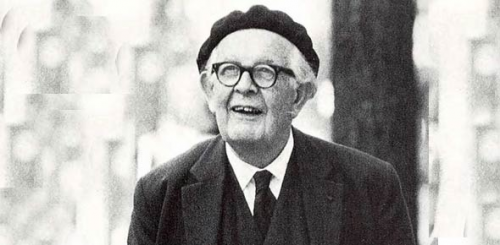
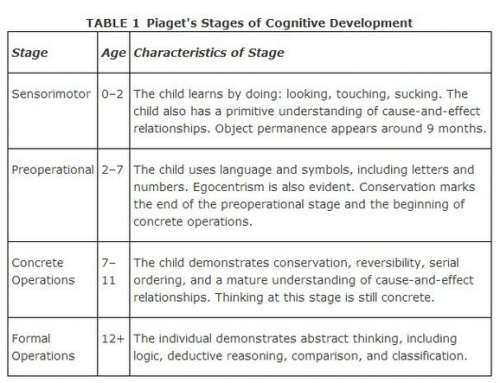
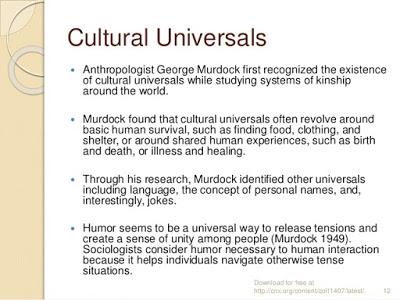


 Avec érudition et sérieux, Le Vigan brave les sentiers battus universitaires, évite l’addiction au verbiage jargonneux et se lance dans une série de digressions, d’élargissements et de références (Lao Tze, maître Eckhart, Balzac…) qui nous enchantent et balaient le sujet si vite qu’elles lui donnent une aura bien différente ! Si l’homme (le pauvre homme) est un être addictif (le travail, le sexe, Dieu…), l’addiction n’est-elle pas le royal sujet au sens alchimique, qui nécessiterait son Rabelais ou son Fulcanelli pour en parler ? Etant moi-même soumis à l’addiction des citations (car pourquoi écrire enfin, quand tant de gens brillants ou même géniaux le font mieux que vous ?), je citerai le texte de Pierre… On trouve ainsi le passage de la névrose à la dépression. Historiquement et freudiennement, cela sonne comme ça. Notre savant écrit : « Trop d’interdits, dans les sociétés traditionnelles, créaient des refoulements et des conflits intérieurs, mais trop peu de cadres, trop peu de disciplines venues de l’extérieur enferment l’individu dans un rêve de toute puissance. « Le sujet ne souffre d’aucune contrainte affective, mais se voit enserré dans la course haletante à la jouissance qui le voue à la dialectique ‘’dépression-antidépression’’ » [citant J. Arènes et N. Sarthou-Lajus]…
Avec érudition et sérieux, Le Vigan brave les sentiers battus universitaires, évite l’addiction au verbiage jargonneux et se lance dans une série de digressions, d’élargissements et de références (Lao Tze, maître Eckhart, Balzac…) qui nous enchantent et balaient le sujet si vite qu’elles lui donnent une aura bien différente ! Si l’homme (le pauvre homme) est un être addictif (le travail, le sexe, Dieu…), l’addiction n’est-elle pas le royal sujet au sens alchimique, qui nécessiterait son Rabelais ou son Fulcanelli pour en parler ? Etant moi-même soumis à l’addiction des citations (car pourquoi écrire enfin, quand tant de gens brillants ou même géniaux le font mieux que vous ?), je citerai le texte de Pierre… On trouve ainsi le passage de la névrose à la dépression. Historiquement et freudiennement, cela sonne comme ça. Notre savant écrit : « Trop d’interdits, dans les sociétés traditionnelles, créaient des refoulements et des conflits intérieurs, mais trop peu de cadres, trop peu de disciplines venues de l’extérieur enferment l’individu dans un rêve de toute puissance. « Le sujet ne souffre d’aucune contrainte affective, mais se voit enserré dans la course haletante à la jouissance qui le voue à la dialectique ‘’dépression-antidépression’’ » [citant J. Arènes et N. Sarthou-Lajus]…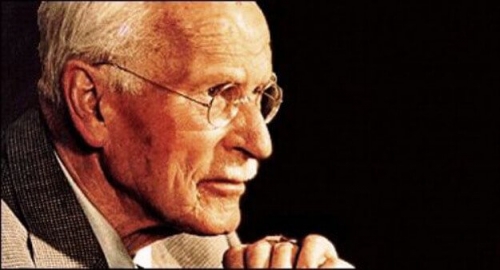
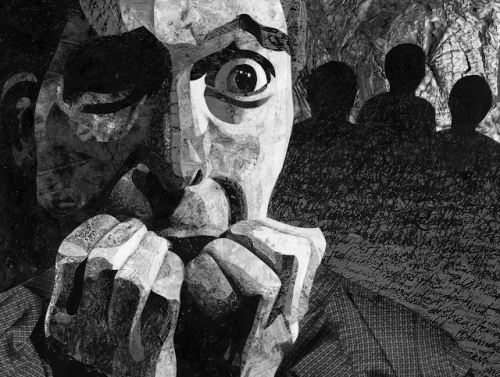

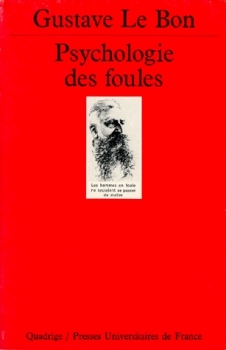 Gustave Le Bon affirme que l’évolution des institutions politiques, des religions ou des idéologies n’est qu’un leurre. Malgré des changements superficiels, une même âme collective continuerait à s’exprimer sous des formes différentes. Farouche opposant du socialisme de son époque, Gustave Le Bon ne croit pas pour autant au rôle de l’individu dans l’histoire. Il conçoit les peuples comme des corps supérieurs et autonomes dont les cellules constituantes sont les individus. La courte existence de chacun s’inscrit par conséquent dans une vie collective beaucoup plus longue. L’âme d’un peuple est le résultat d’une longue sédimentation héréditaire et d’une accumulation d’habitudes ayant abouti à l’existence d’un « réseau de traditions, d’idées, de sentiments, de croyances, de modes de penser communs » en dépit d’une apparente diversité qui subsiste bien sûr entre les individus d’un même peuple. Ces éléments constituent la synthèse du passé d’un peuple et l’héritage de tous ses ancêtres : « infiniment plus nombreux que les vivants, les morts sont aussi infiniment plus puissants qu’eux » (lois psychologiques de l’évolution des peuples). L’individu est donc infiniment redevable de ses ancêtres et de ceux de son peuple.
Gustave Le Bon affirme que l’évolution des institutions politiques, des religions ou des idéologies n’est qu’un leurre. Malgré des changements superficiels, une même âme collective continuerait à s’exprimer sous des formes différentes. Farouche opposant du socialisme de son époque, Gustave Le Bon ne croit pas pour autant au rôle de l’individu dans l’histoire. Il conçoit les peuples comme des corps supérieurs et autonomes dont les cellules constituantes sont les individus. La courte existence de chacun s’inscrit par conséquent dans une vie collective beaucoup plus longue. L’âme d’un peuple est le résultat d’une longue sédimentation héréditaire et d’une accumulation d’habitudes ayant abouti à l’existence d’un « réseau de traditions, d’idées, de sentiments, de croyances, de modes de penser communs » en dépit d’une apparente diversité qui subsiste bien sûr entre les individus d’un même peuple. Ces éléments constituent la synthèse du passé d’un peuple et l’héritage de tous ses ancêtres : « infiniment plus nombreux que les vivants, les morts sont aussi infiniment plus puissants qu’eux » (lois psychologiques de l’évolution des peuples). L’individu est donc infiniment redevable de ses ancêtres et de ceux de son peuple.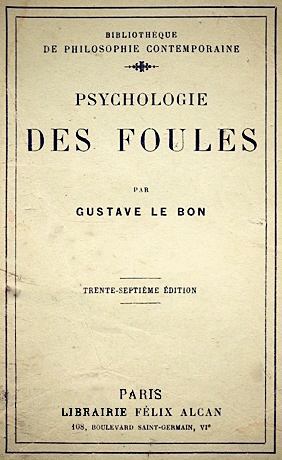 La dilution des religions dans l’âme des peuples
La dilution des religions dans l’âme des peuples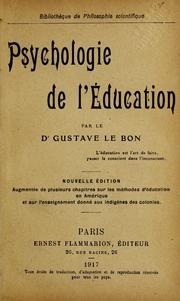 Ainsi, l’art de l’Egypte ancienne a irrigué la création artistique d’autres peuples pendant des siècles. Mais cet art, essentiellement religieux et funéraire et dont l’aspect massif et imperturbable rappelait la fascination des égyptiens pour la mort et la quête de vie éternelle, reflétait trop l’âme égyptienne pour être repris sans altérations par d’autres. D’abord communiqué aux peuples du Proche-Orient, cet art égyptien a inspiré les cités grecques. Mais Gustave Le Bon estime que ces influences égyptiennes ont irrigué ces peuples à travers le prisme de leur propre esprit. Tant qu’il ne s’est pas détaché des modèles orientaux, l’art grec s’est maintenu pendant plusieurs siècles à un stade de pâle imitation. Ce n’est qu’en se métamorphosant soudainement et en rompant avec l’art oriental que l’art grec connut son apogée à travers un art authentiquement grec, celui du Parthénon. A partir, d’un matériau identique qu’est le modèle égyptien transmis par les Perses, la civilisation indienne a abouti à un résultat radicalement différent de l’art grec. Parvenu à un stade de raffinement élevé dès les siècles précédant notre ère mais n’ayant que très peu évolué ensuite, l’art indien témoigne de la stabilité organique du peuple indien : « jusqu’à l’époque où elle fut soumis à la loi de l’islam, l’Inde a toujours absorbé les différents conquérants qui l’avaient envahie sans se laisser influencer par eux ».
Ainsi, l’art de l’Egypte ancienne a irrigué la création artistique d’autres peuples pendant des siècles. Mais cet art, essentiellement religieux et funéraire et dont l’aspect massif et imperturbable rappelait la fascination des égyptiens pour la mort et la quête de vie éternelle, reflétait trop l’âme égyptienne pour être repris sans altérations par d’autres. D’abord communiqué aux peuples du Proche-Orient, cet art égyptien a inspiré les cités grecques. Mais Gustave Le Bon estime que ces influences égyptiennes ont irrigué ces peuples à travers le prisme de leur propre esprit. Tant qu’il ne s’est pas détaché des modèles orientaux, l’art grec s’est maintenu pendant plusieurs siècles à un stade de pâle imitation. Ce n’est qu’en se métamorphosant soudainement et en rompant avec l’art oriental que l’art grec connut son apogée à travers un art authentiquement grec, celui du Parthénon. A partir, d’un matériau identique qu’est le modèle égyptien transmis par les Perses, la civilisation indienne a abouti à un résultat radicalement différent de l’art grec. Parvenu à un stade de raffinement élevé dès les siècles précédant notre ère mais n’ayant que très peu évolué ensuite, l’art indien témoigne de la stabilité organique du peuple indien : « jusqu’à l’époque où elle fut soumis à la loi de l’islam, l’Inde a toujours absorbé les différents conquérants qui l’avaient envahie sans se laisser influencer par eux ».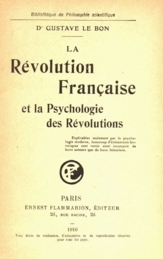 La genèse des peuples
La genèse des peuples
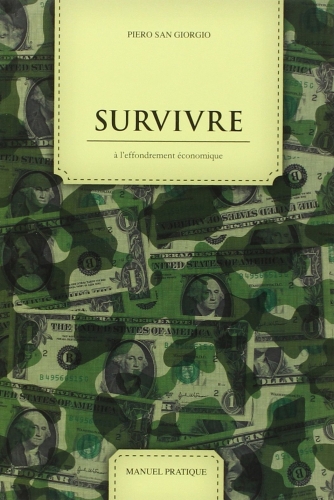 Tout est fait pour le divertissement immédiat : amusement constant, pornographie, drogues. La culture de la consommation nous focalise sur l'avoir au lieu de l'être, sur la possession au lieu des relations, sur les apparences au lieu du bien-être. Cela pousse à l'égoïsme, à l'égocentrisme, à la concurrence constante. Dans tous les domaines, on se compare toujours au niveau le plus haut, idéalisé, impossible à atteindre. La confusion et la frustration engendrées sont considérables. Résultat : des problèmes comme les maladies mentales, le taux de divorce, l'addiction aux drogues et à d'autres substances, et même les taux de criminalité n'ont fait qu'augmenter partout en Occident depuis les années 1950.
Tout est fait pour le divertissement immédiat : amusement constant, pornographie, drogues. La culture de la consommation nous focalise sur l'avoir au lieu de l'être, sur la possession au lieu des relations, sur les apparences au lieu du bien-être. Cela pousse à l'égoïsme, à l'égocentrisme, à la concurrence constante. Dans tous les domaines, on se compare toujours au niveau le plus haut, idéalisé, impossible à atteindre. La confusion et la frustration engendrées sont considérables. Résultat : des problèmes comme les maladies mentales, le taux de divorce, l'addiction aux drogues et à d'autres substances, et même les taux de criminalité n'ont fait qu'augmenter partout en Occident depuis les années 1950.




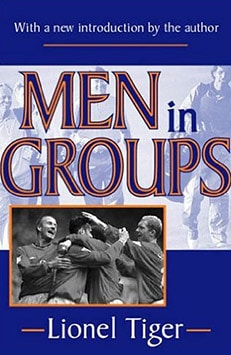





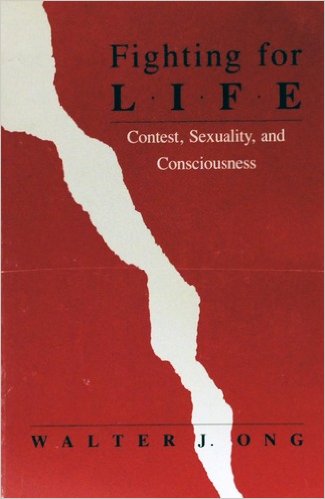


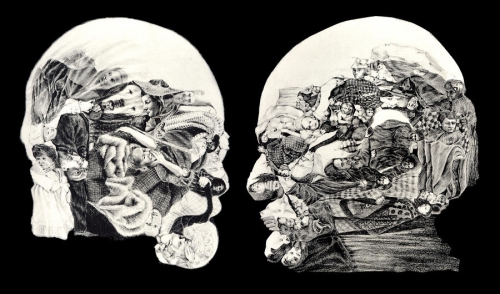




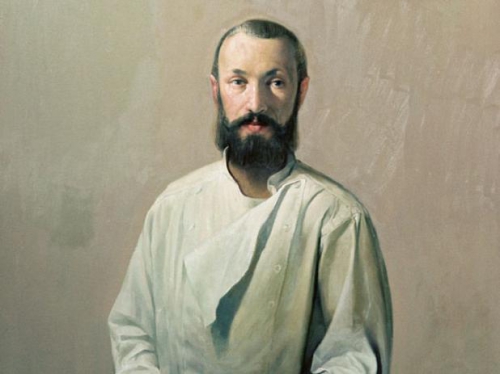
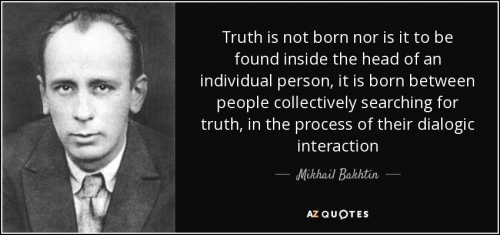


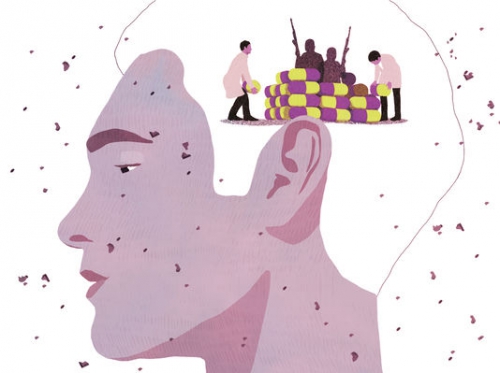

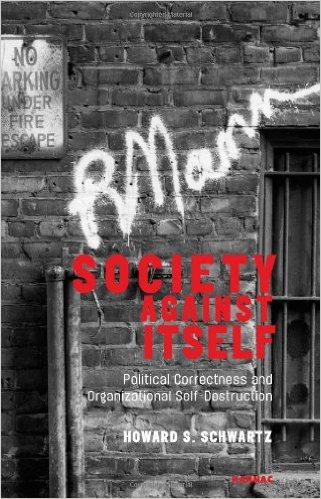
 Les enfants naissent centrés sur leur moi, principalement parce qu’ils ont « un moi », comme l’a fort bien montré G.K. Chesterton. Et de même que les langues sont mieux apprises dans le jeune âge, la moralité, la tolérance à la critique et les limites portées à son propre désir sont mieux intégrées pendant les premières années. C’est ce que dit le proverbe anglais : « Comme le plant est courbé pousse l’arbre »… Un enfant dont l’énergie naturelle et les instincts tyranniques ne sont pas modérés pourrait ne jamais grandir sans s’en affranchir. Il ne faut pas s’étonner qu’une telle personne développe une forte tendance narcissique, intolérante à la moindre critique et exigeant une validation permanente de sa propre image déifiée.
Les enfants naissent centrés sur leur moi, principalement parce qu’ils ont « un moi », comme l’a fort bien montré G.K. Chesterton. Et de même que les langues sont mieux apprises dans le jeune âge, la moralité, la tolérance à la critique et les limites portées à son propre désir sont mieux intégrées pendant les premières années. C’est ce que dit le proverbe anglais : « Comme le plant est courbé pousse l’arbre »… Un enfant dont l’énergie naturelle et les instincts tyranniques ne sont pas modérés pourrait ne jamais grandir sans s’en affranchir. Il ne faut pas s’étonner qu’une telle personne développe une forte tendance narcissique, intolérante à la moindre critique et exigeant une validation permanente de sa propre image déifiée. Dernière remarque. Le professeur Schwartz relève une observation de l’éditorialiste Megan McArdle. Celle-ci a écrit : « Les étudiants d’aujourd’hui n’expriment pas leurs demandes selon des critères de moralité mais dans le jargon de la sécurité. Ils ne vous demandent pas d’arrêter de leur commenter des livres traitant de questions complexes parce que la pensée exprimée est fausse, mais parce qu’ils les considèrent comme dangereux et ne devraient pas être abordés sans de sévères mises en garde. Ils ne veulent pas faire taire un orateur parce que ses idées sont mauvaises mais parce qu’il représente un danger immédiat pour la communauté universitaire. » Raison unique à cet état de fait : ces étudiants ne tiennent aucun compte des critères de moralité.
Dernière remarque. Le professeur Schwartz relève une observation de l’éditorialiste Megan McArdle. Celle-ci a écrit : « Les étudiants d’aujourd’hui n’expriment pas leurs demandes selon des critères de moralité mais dans le jargon de la sécurité. Ils ne vous demandent pas d’arrêter de leur commenter des livres traitant de questions complexes parce que la pensée exprimée est fausse, mais parce qu’ils les considèrent comme dangereux et ne devraient pas être abordés sans de sévères mises en garde. Ils ne veulent pas faire taire un orateur parce que ses idées sont mauvaises mais parce qu’il représente un danger immédiat pour la communauté universitaire. » Raison unique à cet état de fait : ces étudiants ne tiennent aucun compte des critères de moralité.
 Thorndike est un des grands penseurs du behaviorisme. Sa contribution principale à la recherche a été la conceptualisation de l’apprentissage par essai-erreur. Un exemple emblématique des recherches expérimentales menées par Thorndike est celui de la boite-problème (1911). Il s’agit d’une cage dans laquelle un chat est enfermé. La cage est dotée d’un dispositif d’ouverture que le félin doit trouver. Les observations de Thorndike l’ont amené à considérer que dans un premier temps, le comportement de l’animal dans la boite paraissait extrêmement désordonné, tentant de s’évader en passant par les barreaux, se débattant, griffant la porte… En agissant de la sorte, le chat finit tôt ou tard par actionner accidentellement le dispositif d’ouverture et par s’échapper. En répétant l’expérience, au bout d’un certain nombre d’essais plus ou moins grand, le temps que met l’animal pour sortir de la cage va se raccourcir.
Thorndike est un des grands penseurs du behaviorisme. Sa contribution principale à la recherche a été la conceptualisation de l’apprentissage par essai-erreur. Un exemple emblématique des recherches expérimentales menées par Thorndike est celui de la boite-problème (1911). Il s’agit d’une cage dans laquelle un chat est enfermé. La cage est dotée d’un dispositif d’ouverture que le félin doit trouver. Les observations de Thorndike l’ont amené à considérer que dans un premier temps, le comportement de l’animal dans la boite paraissait extrêmement désordonné, tentant de s’évader en passant par les barreaux, se débattant, griffant la porte… En agissant de la sorte, le chat finit tôt ou tard par actionner accidentellement le dispositif d’ouverture et par s’échapper. En répétant l’expérience, au bout d’un certain nombre d’essais plus ou moins grand, le temps que met l’animal pour sortir de la cage va se raccourcir.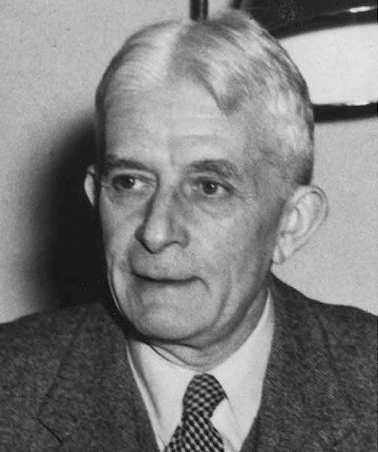 Une expérience menée par Koehler (1927) au sujet de l’intelligence des singes supérieurs permet d’illustrer cette approche. Koehler a enfermé un chimpanzé dans une cage et posé une banane sur le sol à l’extérieur de la cage de telle sorte que le singe ne puisse pas l’atteindre. Un bâton est également déposé dans la cage. Le singe va d’abord tenter de s’emparer de la banane avec ses bras. N’y arrivant pas, il renonce et va s’assoir dans la cage. Tout à coup, il se lève, se saisit du bâton et va l’utiliser pour déplacer la banane vers la cage afin de s’en saisir.
Une expérience menée par Koehler (1927) au sujet de l’intelligence des singes supérieurs permet d’illustrer cette approche. Koehler a enfermé un chimpanzé dans une cage et posé une banane sur le sol à l’extérieur de la cage de telle sorte que le singe ne puisse pas l’atteindre. Un bâton est également déposé dans la cage. Le singe va d’abord tenter de s’emparer de la banane avec ses bras. N’y arrivant pas, il renonce et va s’assoir dans la cage. Tout à coup, il se lève, se saisit du bâton et va l’utiliser pour déplacer la banane vers la cage afin de s’en saisir.


